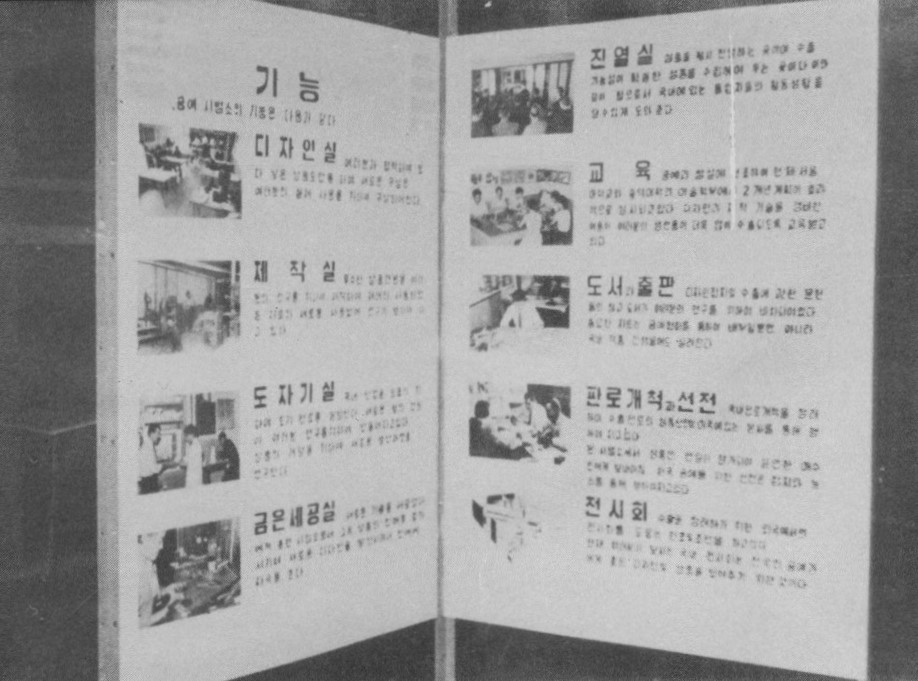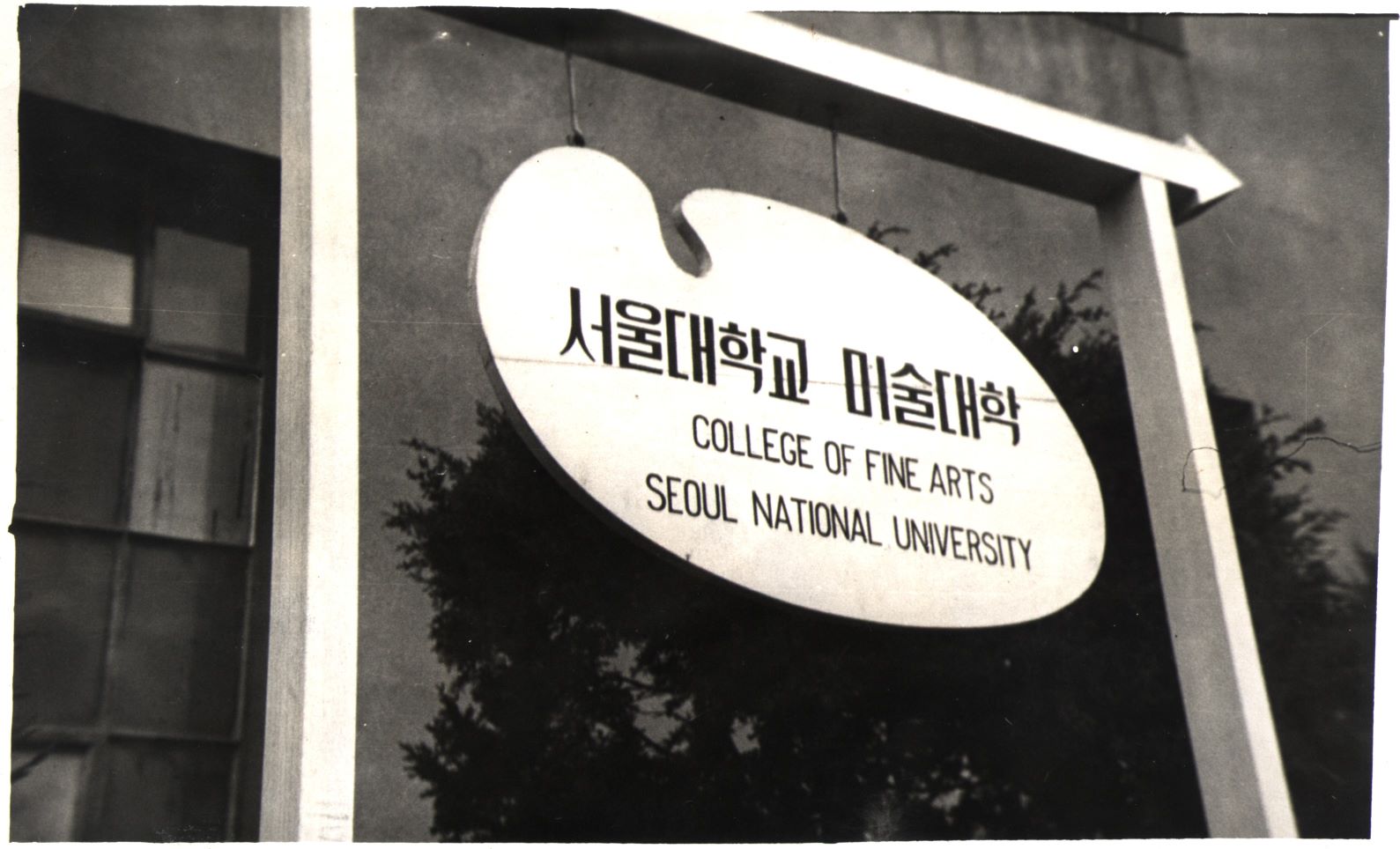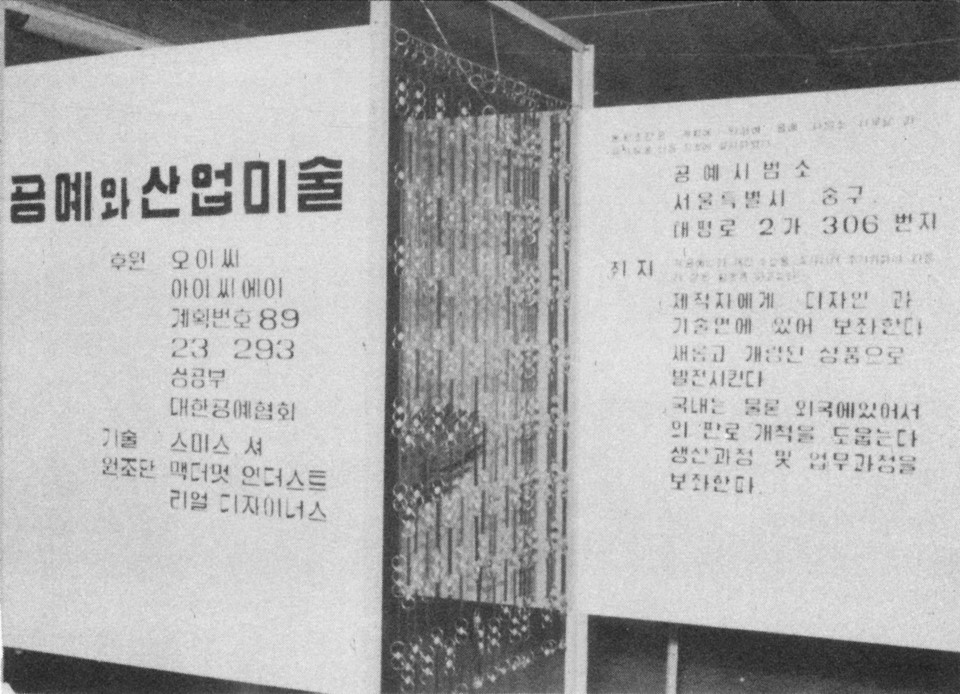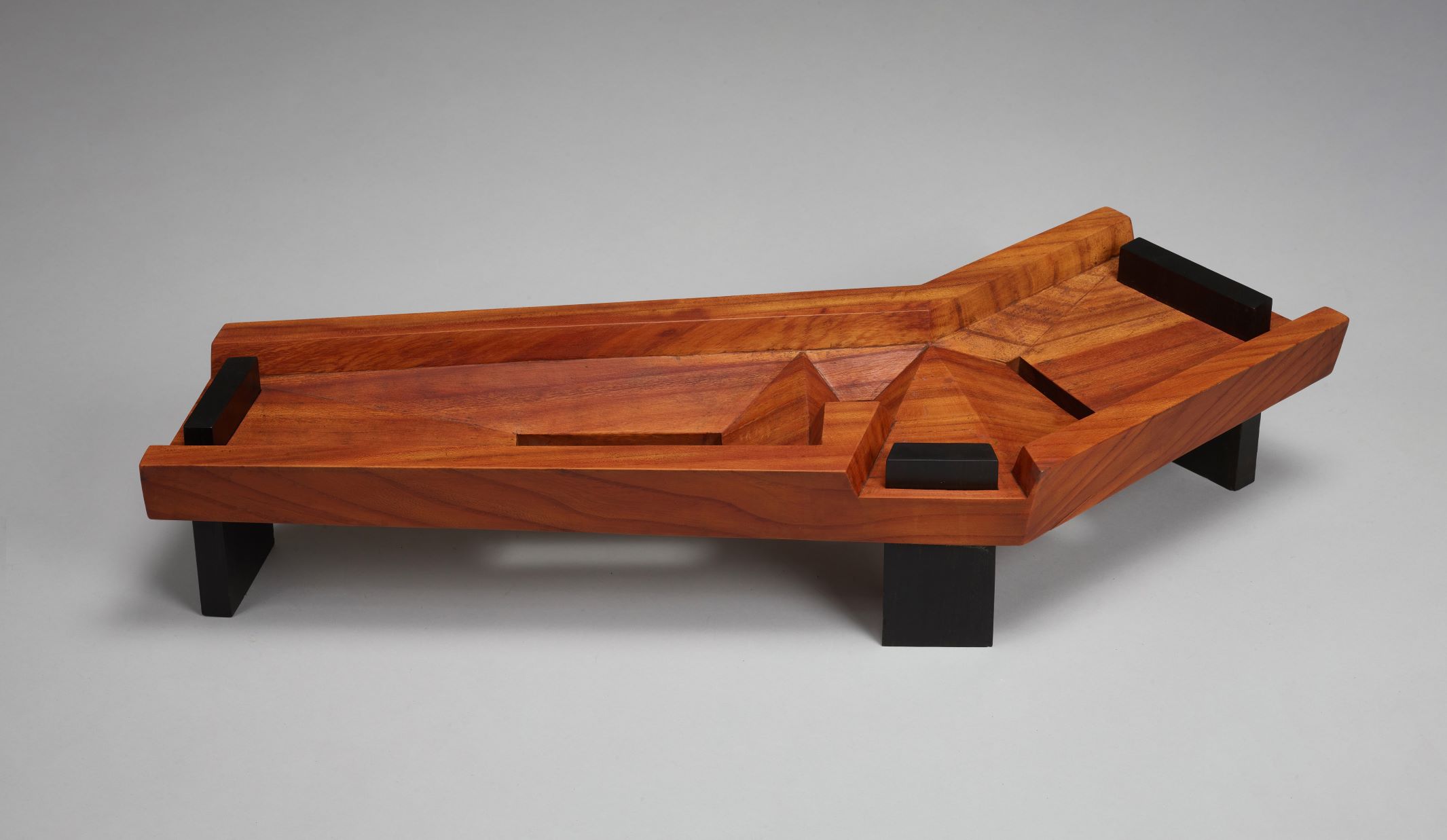
Korean Handicraft Demonstration Center Exhibition View, c.1959, Image provided by Kim Jongkyun
Korean Handicraft Demonstration Center
* Source: Multilingual Glossary of Korean Art by Korea Arts Management Service
Related
-

College of Arts at Seoul National University
The College of Fine Arts of Seoul National University is located in Sillim-dong, Gwanak-gu, Seoul. According to the Decree on the Establishment of Seoul National University, the College of Art including the Department of Fine Arts and the Department of Music was founded in August 1946 at Seoul National University. The Department of Fine Arts consisted of sub-departments of Painting I, Painting II, Sculpture, and Design. It was organized by Chang Louis Pal and Lee Soonsuk. Chang Louis Pal had served as head of the Education and Management Bureau in the U.S. Army Military Government in Korea (USAMGIK) in Korea since December 1945. Lee Soonsuk assumed practical tasks as an advisor to the art section of the USAMGIK from 1946 when the Education and Management Bureau was changed to the Ministry of Culture and Education. In 1946, there were nine faculty members at the Department of Fine Arts in the College of Art: Chang Louis Pal, Kim Yongjun, Gil Jinseop, and Lee Jaehun as professors; Yun Seung-uk and Lee Soonsuk as associate professors; and Kim Whanki, Chang Woosoung, and Lee Byeonghyeon as assistant professors. However, after the incident of Korean students and professors’ protest against the U.S.’s attempt to merge several colleges and universities into a single university, Kim Yongjun, Gil Jinseop, and Kim Whanki resigned. In 1954, the College of Art was reorganized into the College of Fine Arts with three departments of painting, sculpture, and applied art. The Department of Aesthetics, which had temporarily belonged to the College of Fine Arts since 1948, was transferred to the College of Liberal Arts and Sciences in 1960. In 1963, according to the relocation plan of the Seoul National University main school building, the College of Fine Arts was moved to the former veterinary department building in Yeongeon-dong, Jongno-gu. In 1972, it was moved to the liberal arts department building in Hagye-dong, Seongbuk-gu, and then in 1976, to the current Gwanak campus. In 1981, the three departments of painting, sculpture, and applied art were reorganized into the five departments of Eastern painting, Western painting, sculpture, crafts, and industrial art. In 1989, the Department of Industrial Art was renamed the Department of Industrial Design, and in 1999, the Department of Crafts and the Department of Industrial Design were merged into the School of Design. Currently, the College of Fine Arts consists of the Department of Oriental Painting, Department of Painting, Department of Sculpture, Department of Craft, Department of Design, and Interdisciplinary Programs.
-

Korean Craft Design Institute
The Korean Craft Design Institute [Hanguk gongye dijain yeonguso] was established on July 26, 1966 to improve design, conduct research on production technology, train technicians in the craft field and promote exports of the craft industry through provision of crafts. It began with the need for a design center that professors led by Lee Soonsuk from the College of Fine Arts at Seoul National University mentioned to the government in the mid-1960s. Accordingly, the institute was founded within the precincts of Seoul National University (currently the International Design School for Advanced Studies at Hongik University in Yeongeon-dong, Jongro-gu, Seoul) with support from the Ministry of Commerce and Industry. The first chairman was Park Gapseong, and the director was Lee Soonsuk. Practical tasks began to be undertaken in 1968, covering the fields of wood-lacquering crafts, ceramics, goldsmithing, weaving, dyeing, industrial art, and commercial art. The Korean Craft Design Institute was the first design promotion organization in South Korea, with the exception of the Korean Handicraft Demonstration Center [Hanguk gongye sibeomso] run by Americans in the 1950s. It was part of the College of Fine Arts of the Seoul National University. However, in actuality, it received interference from the Ministry of Commerce and Industry and was renamed the Korean Export Design Center in 1969. There was a discrepancy between the management team that aimed for a research-oriented institution and the Ministry of Commerce and Industry that sought to make it an export promotion institution. This discrepancy led to its merging with the Korean Packaging Technology Association in 1970. As it was renamed the Korean Design Packaging Center (present-day Korea Institute of Design Promotion), it came to belong to the state.
-

Korean Project
The Korean Project was one of several U.S. technology sponsorship programs implemented in the late 1950s through the International Cooperation Administration (ICA) under the U.S. Department of State. Its undertaker was Smith, Scherr & McDermott Industrial Design (SSM), whose headquarters was located in Akron, Ohio. The SSM prepared a report on the promotion of the Korean handicraft industry in November 1955, but the support plan was put on hold due to the unstable situation in Korea. The SSM officially resumed its activities in August 1957 and established the Korea Handicraft Demonstration Center (KHDC) in January 1958. The contract between the ICA and SSM was threefold: (1) the development of training programs for Koreans in industrial design departments at universities in the U.S., (2) the establishment and support of craft courses at Korean universities, and (3) the founding and operation of the Korea Handicraft Demonstration Center. The total project period was twenty-eight months. The KHDC dispatched Korean artists, including Min Chulhong, Kim Chungsook, Kwon Soonhyung, and Pai Mansil, to the U.S., and they returned to Korea and served as professors at Seoul National University, Ewha Womans University, and Hongik University. With the aim of increasing productivity and overseas exports, it also launched a handicraft project to discover local specialties and craftworks and a light industry project to provide technical support for mass-producible items. In the first half of 1959, it focused on field surveys and domestic traveling tours of local specialties and light industrial plants throughout the country. Based on these activities, the KHDC held A Korean Project exhibition from September 1 through October 4 of the same year at the Akron Art Institute in the U.S. and sold a variety of craftworks, including mother-of-pearl lacquerware, furniture, bags, baskets, and brassware. The KHDC was closed in January 1960. After its closure, apparatuses and materials were moved to the College of Fine Arts at Seoul National University. Exchanges with American designers dispatched by the SSM continued until 1963. The Korean Project enabled the transmission of the American crafts and design education system as well as the standardization and technical improvement of handicraft items and light industrial products. On the other hand, the prioritization of mass production and export resulted in the deterioration of the quality of traditional crafts and established them as local specialties or tourist souvenirs.







